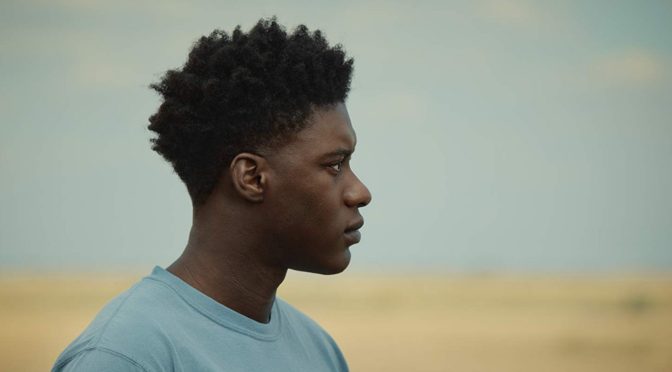Following 2016’s A MOVING IMAGE, which examined Brixton’s gentrification in a variety of styles, Shola Amoo returns with his second feature film. Shot more conventionally than his last work, THE LAST TREE follows the story of Femi (Tai Golding and, as an older teenager, Sam Adewunmi) as he grows up in three separate environments, navigating his British and Nigerian roots. As a partly autobiographical tale for Amoo, the direction allows the audience to examine the world through Femi’s eyes, and tread his path.
This approach allows THE LAST TREE to present its story in the same way that it is unveiled to its characters, by framing the audience’s perception of different characters and situations through Femi’s lens. This is particularly important at the start of the film, where a young Femi is often silent, ensuring that he must be interpreted through his actions, rather than words. His interactions with others are also framed in such a way, with non-English speech never subtitled, in order to ensure that the audience must interpret this in the same way as Femi himself. This is aided by the cinematography, beautifully shot by Stil Williams, with the landscapes of rural Lincolnshire bathed in a golden glow; representing a time, for Femi, that he never wants to end. In order to develop this connection between the character and the audience, the camera repeatedly returns to the eyes throughout the film, asking viewers to examine Femi more closely. Even the transition between stages, a rapid blinking, refers back to them. Of course, given that perception is firmly tainted by our own views, the film also has the opportunity to examine this more deeply. However, with the exception of one scene the film never strays far into fantasy, something that instead could have been built on to tease apart some aspects of Femi’s journey more thoroughly, something that A MOVING IMAGE perhaps achieved more thoroughly with its stylistic mix.
As well as examining Femi’s coming of age through his perceptions, Amoo is also keen to look at the changes that occur throughout this period. In each stage of his life, THE LAST TREE returns to water, an ever-changing dynamic force in the world. These herald changes for Femi, be they geographic, physical, or in relationships, that cause the audience to interpret what they see in a new light. The relationship with his mother (Gbemisola Ikumelo) is perhaps the pinnacle of this aspect of the film’s storytelling, with a somewhat clichéd cold relationship becoming something far more interesting by the story’s conclusion. While some other clichés may not change into something as compelling, if at all, there is a good attempt to try throughout, with the symbolic use of The Cure’s music one of the more successful. This could be due to the score by Segun Akinola, continuing his excellent work from Doctor Who, which has a real understanding of when it is needed to accent the film. In some instances, the score drops away, almost entirely, to allow moments of introspective silence for Femi and the audience.
This thoughtfulness is one which typifies THE LAST TREE as a whole. While it may not be entirely successful in its storytelling, the excellence of its craft is undeniable, with the luscious cinematography ensuring that its 99-minute run time is a rewarding one. With the quality of the performances and production, the team behind THE LAST TREE are certainly worth looking out for in the future.

